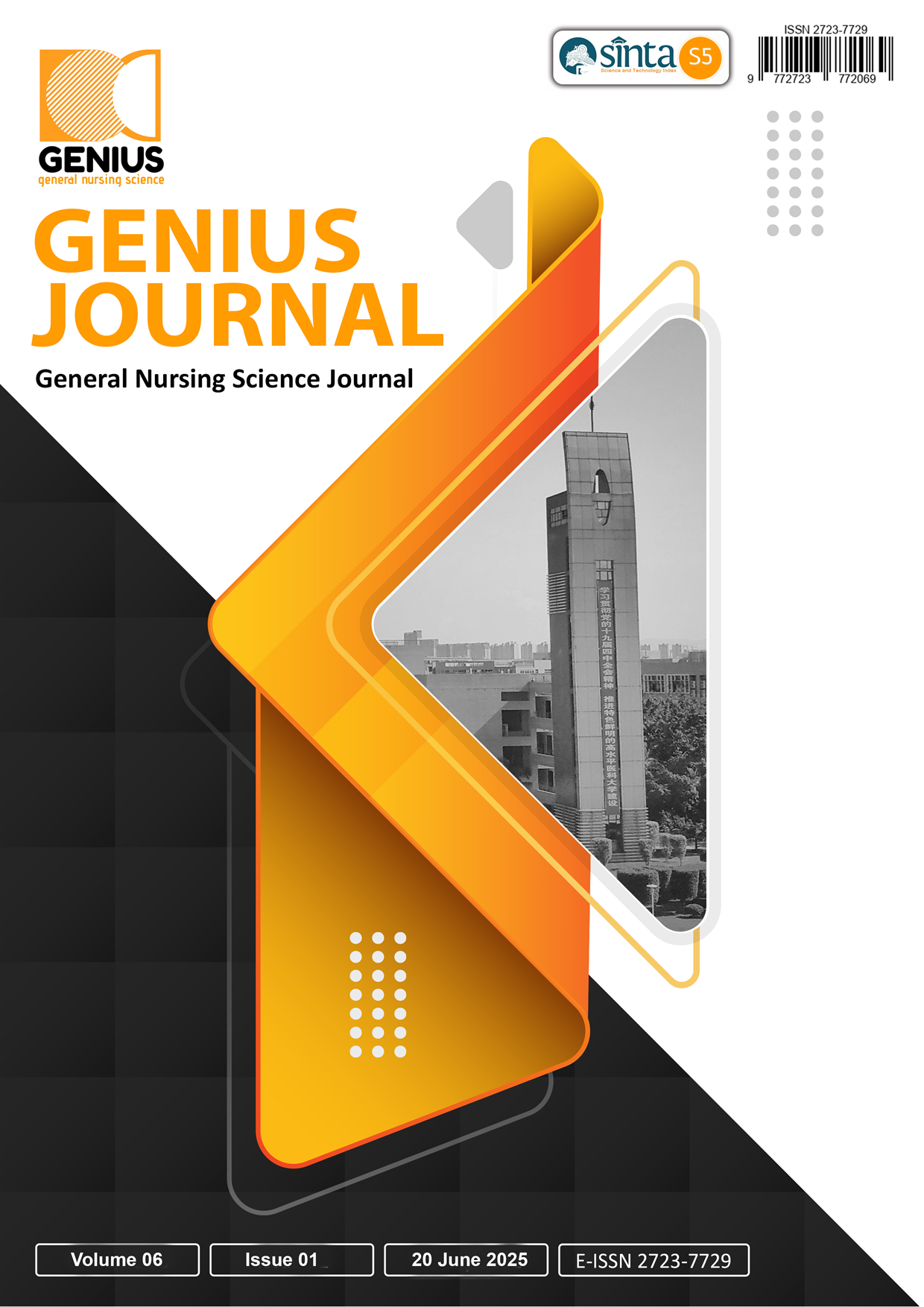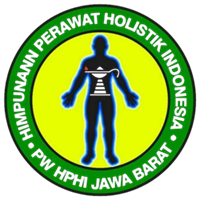Factors Associated with Nurses' Job Satisfaction in the Implementation of the Team Assignment Method
DOI:
https://doi.org/10.56359/gj.v6i1.596Keywords:
hospital care, job satisfaction, nursing management, team assignmentAbstract
Introduction: The implementation of team-based nursing assignments is increasingly recognized as a crucial factor influencing nurses' job satisfaction. However, the effectiveness of this method in enhancing job satisfaction remains insufficiently explored, especially in Indonesian hospital settings.
Objective: This study aimed to identify the factors related to nurses' job satisfaction in relation to the application of the team assignment method at Bhayangkara Hospital, Bandar Lampung in 2025.
Method: This quantitative research employed a cross-sectional design involving 55 nurses selected using purposive sampling. The population included all inpatient nurses, with sample distribution determined using stratified random sampling. Data were analyzed using statistical tests to examine the association between job satisfaction factors (responsibility, working conditions, coworker relations, and task assignment) and the implementation of the team method.
Results: The findings showed significant relationships between the team assignment method and all measured aspects of job satisfaction. Nurses with good responsibility, favorable working conditions, positive coworker relations, and clear task assignments were more likely to report higher job satisfaction. All variables showed statistically significant p-values (p < 0.05), with odds ratios indicating strong associations, particularly between working conditions and satisfaction.
Conclusion: The study concludes that the team assignment method has a substantial influence on nurses’ job satisfaction. Effective implementation of this method—through improved supervision, fair task distribution, and supportive working environments—can enhance both nurse well-being and care quality.
Downloads
References
Aiken, L. H., Ceron, C., Simonetti, M., Lake, E. T., Galiano, A., Garbarini, A., ... & Smith, H. L. (2018). Hospital nurse staffing and patient outcomes. Revista Médica Clínica Las Condes, 29(3), 322–327.
Aiken, L. H., Sloane, D. M., & Griffiths, P. (2012). Patient satisfaction with hospital care: A meta-analysis. Journal of Nursing Administration (JONA), 42(9), 452–458. https://doi.org/10.1097/NNA.0b013e31826d3c1b
Bae, S. H. (2016). The impact of teamwork on reducing burnout and improving job satisfaction among nurses. Nursing Outlook, 64(5), 487–495. https://doi.org/10.1016/j.outlook.2016.05.002
Bangun, W. (2016). Manajemen sumber daya manusia. Erlangga.
Barahama, K. F., Katuuk, M., & Oroh, W. M. (2019). Hubungan beban kerja dengan kepuasan kerja perawat di ruangan perawatan dewasa RSU GMIM Pancaran Kasih Manado. Jurnal Keperawatan, 7(1).
Hasibuan, M. S. P. (2016). Manajemen sumber daya manusia (Edisi Revisi). PT Bumi Aksara.
Herzberg, F., Mausner, B., & Snyderman, B. B. (1959). The motivation to work (2nd ed.). John Wiley.
Indra, I. M., Lestari, F. V. A., Martini, M., Satmoko, N. D., & Ningsih, S. R. (2023). Konsep dan aplikasi manajemen dalam keperawatan. Penerbit Tahta Media.
Kalisch, B. J., Lee, H., & Dabney, B. W. (2010). The impact of teamwork on patient safety: A systematic review. International Journal of Nursing Studies, 47(8), 1030–1040. https://doi.org/10.1016/j.ijnurstu.2010.01.002
Kalisch, B. J., Lee, H., & Dabney, B. W. (2015). The impact of teamwork on patient safety: A systematic review. International Journal of Nursing Studies, 52(1), 1–12. https://doi.org/10.1016/j.ijnurstu.2014.07.001
Kemenkes RI. (2021). Pedoman asuhan keperawatan. Kementerian Kesehatan Republik Indonesia.
Mangkunegara, A. A. P. (2017). Manajemen sumber daya manusia. Remaja Rosdakarya.
Marquis, B. L., & Huston, C. J. (2017). Leadership roles and management functions in nursing: Theory and application (9th ed.). Wolters Kluwer Health.
Mizarra, Y. (2018). Hubungan metode penugasan asuhan keperawatan tim dengan kinerja perawat di instalasi rawat inap Rumah Sakit Daerah Kota Padangsidimpuan. e-Journal Keperawatan (e-kep), 5(2), 25–27.
Nela, A. S., Machmud, R., & Susanti, M. (2021). Hubungan kompetensi perawat penanggung jawab asuhan (PPJA) dengan kualitas handover pasien di instalasi rawat inap RSUP DR. M. Djamil Padang tahun 2020. Jurnal Endurance: Kajian Ilmiah Problema Kesehatan, 6(1), 1–10.
Nisa, K. (2020). Peran dan kewajiban perawat sebagai pemberi asuhan keperawatan di rumah sakit.
Notoatmodjo, S. (2018). Metodologi penelitian kesehatan. Rineka Cipta.
Nursalam. (2015). Asuhan keperawatan profesional. Salemba Medika.
Nursalam. (2016). Metodologi penelitian ilmu keperawatan. Salemba Medika.
Ouchi, H., & Tsuboi, Y. (2016, November). Addressee and response selection for multi-party conversation. In Proceedings of the 2016 Conference on Empirical Methods in Natural Language Processing (pp. 2133–2143).
Pangulimang, I., Pandelaki, K., & Porotuâ, J. (2019). Faktor-faktor yang berhubungan dengan kepuasan kerja perawat di ruang rawat inap RSUD Lapangan Sawang. KESMAS: Jurnal Kesehatan Masyarakat Universitas Sam Ratulangi, 8(6).
Patoding, S., Sari, R. P., & Hertiana, D. (2022). Hubungan penerapan metode asuhan keperawatan profesional (MAKP) tim dengan kepuasan kerja perawat. Prosiding Seminar Nasional Program Pengabdian Kepada Masyarakat, 4, 765–772.
Pelealu, A., Syukur, S. B., & Wano, N. I. B. (2020). Metode asuhan keperawatan tim dengan tingkat kepuasan kerja perawat di ruang rawat inap RSUD Dr. Hasri Ainun Habibie. Jurnal Zaitun Jurusan Keperawatan, 10(1), 2301–5691.
Potter, P. A., & Perry, A. G. (2021). Fundamentals of nursing (10th ed.). Elsevier.
Rahmaniah, L., Rizany, I., & Setiawan, H. (2020). Hubungan penjadwalan dinas perawat dengan kepuasan kerja perawat di instalasi rawat inap. Jurnal Kepemimpinan dan Manajemen Keperawatan, 3(1), 29.
Robbins, S. P., & Judge, T. A. (2018). Perilaku organisasi (Buku 1, Edisi Ke-12). Salemba Empat.
Rusmianingsih, N., Pranatha, A., & Rohmah, T. T. S. N. (2023). Hubungan pelaksanaan metode penugasan keperawatan tim dengan burnout perawat pelaksana di Instalasi Rawat Inap RSUD 45 Kuningan tahun 2023. National Nursing Conference, 1(2), 293–304.
Rusmianingsih, N., Wulan, N., & Muslihah, L. (2022). Hubungan penerapan metode penugasan tim dan komunikasi efektif dengan kepuasan kerja perawat di instalasi rawat inap Rumah Sakit Umum Daerah 45 Kuningan tahun 2022. Journal of Nursing Practice and Education, 3(1), 89–100.
Sandra, R., & Sondari, D. (2017). Faktor-faktor yang berhubungan dengan kepuasan kerja perawat pelaksana di ruang rawat inap RSUD Solok. Jurnal Ilmiah Ilmu-Ilmu Kesehatan, 15(3), 148–155.
Sari, N. (2020). Penerapan sifat proses asuhan keperawatan profesional dalam kualitas pengumpulan data pada pasien di rumah sakit umum.
Setiawati, E., Supriyono, S., & Nuraini, N. (2023). Hubungan metode penugasan tim dengan kepuasan kerja perawat di Rumah Sakit TK II 03.05.01 Dustira. Jurnal Keperawatan, 14(1), 45–53.
Sihaloho, L. B. (2020). Pengertian, dasar, manfaat, karakteristik, model, prinsip dan pentingnya dokumentasi dalam keperawatan.
Smith, J., & Johnson, L. (2021). Age dynamics in the healthcare workforce: Implications for productivity and retention. Journal of Workforce Development, 15(3), 45–62.
Sugiyono. (2019). Metode penelitian kuantitatif, kualitatif dan R&D. Alfabeta.
Swarjana, I. K. (2015). Metodologi penelitian kesehatan (edisi revisi). [e-book], diakses tanggal 30 Januari 2022.
Tampubolon. (2019). Metode penugasan keperawatan. Jurnal Keperawatan Indonesia, 12(1), 1–10.
Wahyudi, I. (2020). Pengalaman perawat menjalani peran dan fungsi perawat di puskesmas Kabupaten Garut. Jurnal Sahabat Keperawatan, 2(1), 36–43.
Widiastuti, R., Susilaningsih, E., & Kurniawan, B. (2017). Penerapan metode tim dalam asuhan keperawatan meningkatkan kepuasan kerja perawat. Jurnal Keperawatan Indonesia, 20(3), 123–130.
World Health Organization. (2020). Gender equity in the health workforce: Analysis of 104 countries. WHO Press.
Downloads
Published
How to Cite
Issue
Section
License
Copyright (c) 2025 Anisa Ayu Rahmawati

This work is licensed under a Creative Commons Attribution 4.0 International License.





















